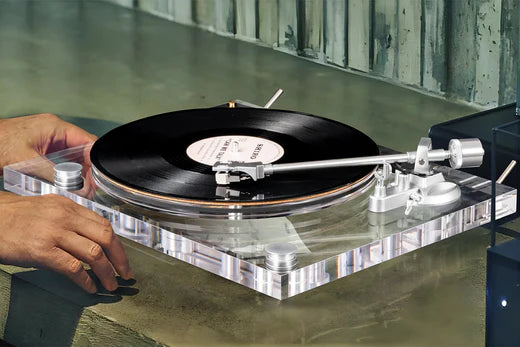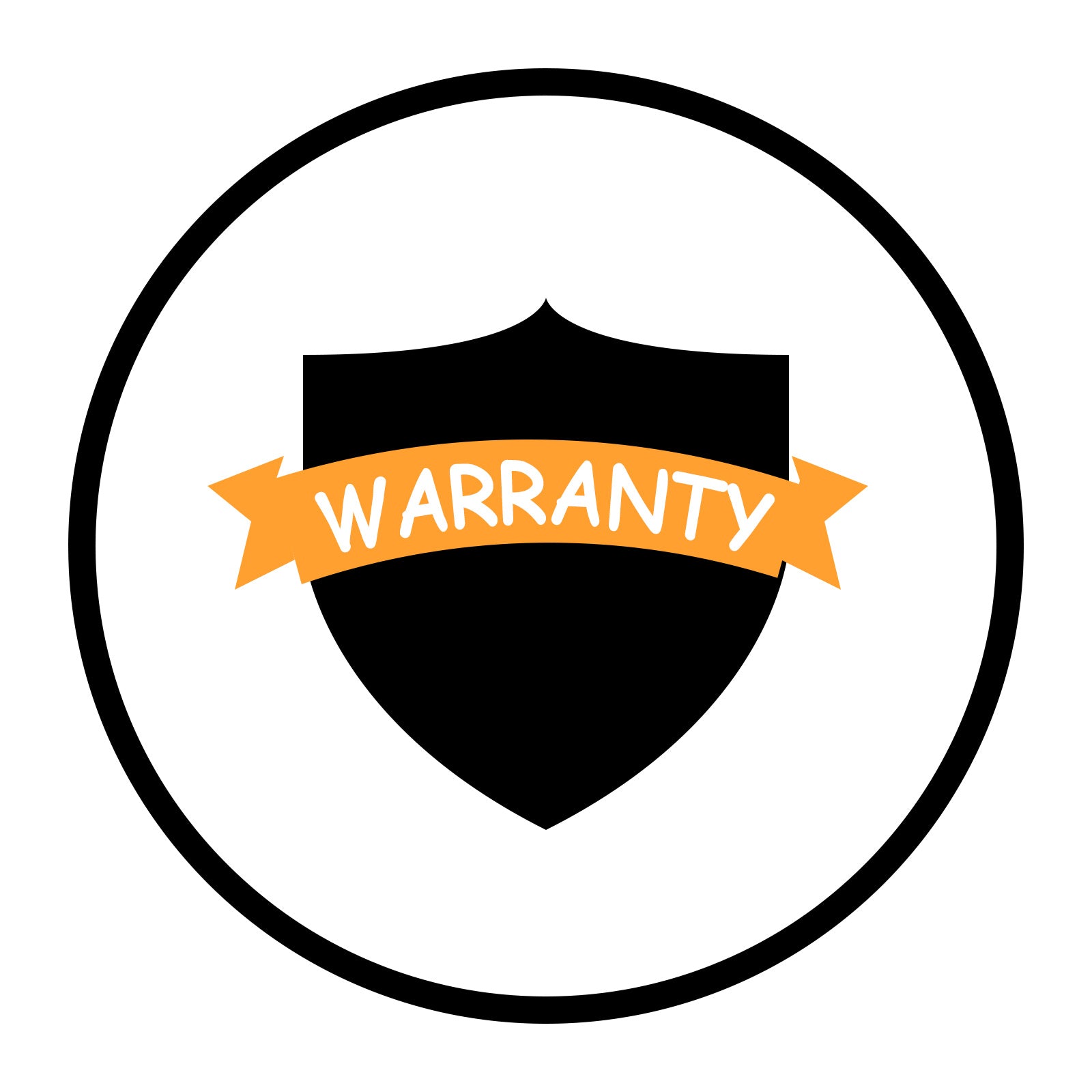Introduction
The magic of vinyl music cannot be replaced, but to ensure that your vinyl turntable (HQKZ-006 or ICE1) always performs at its best, maintenance is crucial. In this article, we’ll take a closer look at how to maintain and care for both of these vinyl turntables to ensure your vinyl music experience never fades.
Part 1: Preparation
The HQKZ-006 and ICE1 are two excellent vinyl turntables with many similarities in their basic construction and components. The following is an introduction to their basic structure and components:
1) Basic Structure:
a. Turntable: The turntable is the heart of a vinyl turntable, spinning and supporting the record to play music. Both HQKZ-006 and ICE1 are equipped with solid and balanced turntables to ensure stable sound quality.
b. Tonearm: The tonearm is the support for the cartridge and stylus. It hangs from the turntable and places the stylus on the record. The design and quality of the tonearm has a significant impact on sound quality.
c. Phono cartridge: Phono cartridge is an audio conversion device that converts mechanical vibration into electrical signals. Both HQKZ-006 and ICE1 are equipped with high-quality cartridges to ensure clear sound quality.
d. Stylus: The stylus is the component that contacts the surface of the record and is responsible for tracking the groove of the record and converting it into an electrical signal. The material and shape of the stylus are crucial to sound quality.
e. Motor: The motor is the key component that drives your turntable to rotate. Both the HQKZ-006 and ICE1 use high-precision motors to ensure a constant rotation speed of the turntable.
2) Importance of Maintenance:
Maintenance is critical to the long-term performance of your vinyl turntable for the following reasons:
a. Sound quality maintenance: Turntable, tone arm and cartridge are key components that directly affect sound quality. Regular maintenance ensures they function properly and avoid noise, distortion or skipping.
b. Needle protection: The stylus is a component that is prone to wear and tear. Regular replacement and keeping clean are important steps to protect the stylus and records.
c. Reduce Mechanical Problems: Regular maintenance can help identify and resolve potential mechanical problems such as loose parts, wear and slippage issues.
d. Extended life: Maintenance not only improves sound quality, but also extends the life of your turntable. A regularly maintained turntable can provide years, even decades, of service.
e. Maintain Appearance: Maintenance also includes cleaning the casing and exterior parts to keep the appearance neat and attractive.
In short, maintenance is a key step to ensure long-term stable performance, excellent sound quality and extended service life of the HQKZ-006 and ICE1 vinyl turntables. With some time and effort, you can enjoy the best of your vinyl music and protect your valuable music collection.
Part 2: Cleaning and Maintenance
Regular cleaning and maintenance of your vinyl turntable is essential to maintaining its performance and sound quality. Here are detailed cleaning steps, required tools and cleaners, and a schedule for regular maintenance:
1) Cleaning Steps:
a. Turntable cleaning: Use a soft, lint-free cloth or a special vinyl turntable brush to gently wipe the surface of your turntable to remove dust and fingerprints. Use a special turntable cleaning brush and carefully brush it in the direction of rotation of the turntable to remove dust.
b. Tone arm cleaning: Carefully lock the tonearm to prevent movement, then gently brush away the dust with a soft brush. Use an air pump or compressed air to remove fine dust.
c. Needle cleaning: Carefully rub the stylus gently with the stylus brush, making sure the bristles are oriented in the same direction as the stylus. Using a special stylus cleaning solution, dampen a small piece of cotton or wool and gently wipe the stylus without applying too much pressure.
d. Housing cleaning: Use a damp cloth to gently wipe the case, making sure not to use too much moisture to avoid damaging the electronic components. For acrylic covers, use a dedicated acrylic cleaner to clean them to avoid scratches.
a. Soft lint-free cloth
b. Special vinyl record brush
c. Air pump or compressed air
d. Stylus brush
e. Stylus cleaning fluid
f. Cotton or wool
g. Acrylic cleaner (if applicable)
3) Regular Maintenance Schedule:
a. After each use: Clean the turntable and stylus with a turntable brush and stylus brush after every time you play your vinyl records to make sure no dust or dirt adheres to them.
b. Monthly: Perform a complete cleaning every month, including enclosures, tonearms, and other components. Check the stylus for wear.
c. Quarterly: A more in-depth cleaning every quarter includes cleaning the bottom of the turntable, lubricating moving parts, and calibrating the turntable speed.
d. Yearly: Every year, replace the stylus and calibrate the tonearm to ensure optimal performance.
With regular cleaning and maintenance, you can maintain the optimal performance of your HQKZ-006 and ICE1 vinyl turntables while extending their lifespan for a superior vinyl music experience.
Part 3: Stylus Replacement
1) The Importance of the Stylus:
The stylus is one of the most critical components in a vinyl turntable and is crucial to sound quality and record protection. The main functions of the stylus include:
a. Tracking the Record Groove: The stylus needs to accurately track the grooves on the record to ensure that the music is played accurately.
b. Transforming music: The stylus converts the mechanical vibrations on the record into electrical signals, which is the origin of sound.
c. Protect the record: A good stylus can reduce wear and damage to the record and extend its life.
2) When Does the Stylus Need to be Replaced:
The stylus is not a permanent part, and over time and use it can wear out, degrade the sound quality, or even damage the record. Here are some pointers on when to replace the stylus:
a. Reduced sound quality: If you hear noise, distortion, or other unusual sound quality issues, this may be a sign that the stylus has worn out.
b. Record Jumping: If the stylus jumps frequently when playing a record, this may be a sign that it is no longer tracking the groove accurately.
c. Visible damage: Check the stylus for any visible damage, such as bending or wear.
d. Maintenance Schedule: If you follow a regular maintenance schedule to replace your stylus, you can ensure that the sound quality remains at its best.
3) Steps and Suggestions for Replacing HQKZ-006 and ICE1 Stylus:
Replacing the stylus requires care and caution. The following are general steps and recommendations, applicable to HQKZ-006 and ICE1:
a. Power Off: Before changing the stylus, make sure to turn off the power to your vinyl turntable for safe operation.
b. Locking the tonearm: Make sure the tonearm is locked in its bracket to prevent inadvertent movement. Remove the old stylus:
c. Carefully remove the old stylus, following the manufacturer's instructions. Typically this involves loosening a set screw or attaching a clamp.
d. Install the new stylus: Follow the instructions provided by the manufacturer of the new stylus and install it carefully, making sure it is securely attached to the tonearm.
e. Adjust the stylus pressure: Adjust the stylus down force according to the specifications and recommendations of the new stylus. Often, stylus pressure affects sound quality and record protection.
f. Calibration: If necessary, depending on the type of stylus, calibrate the tonearm to ensure that the stylus accurately tracks the record groove.
g. Testing: After installing the new stylus, perform some test plays to ensure sound quality and record stability.
Note that replacing a stylus may require specific tools and skills, and if you're not sure how to perform these steps, it's best to seek professional help or consult the manufacturer's guidelines. Proper stylus replacement is key to maintaining sound quality and record protection.
Part 4: Turntable Calibration
1) The Concept of Turntable Calibration:
Turntable calibration is a critical maintenance task that ensures your vinyl turntable's sound quality and performance remain accurate. Calibration involves adjusting the turntable's rotational speed to ensure it remains consistent with the standard 33⅓ RPM (revolutions per minute) or 45 RPM. Accurate rotation speed is crucial as it directly affects the pitch and duration of the music. Incorrect rotation speed may cause the music to rise or fall, or even cause the music on the record to be out of place.
2) Turntable Calibration Steps for HQKZ-006 and ICE1:
a. Power Off: Before performing turntable calibration, be sure to turn off the power to your turntable for safety reasons.
b. Access the speed control: Locate the speed control switch located above the turntable or on the swivel body. This is usually a switch or button that switches between 33⅓ RPM and 45 RPM modes.
c. Calibration Tool: Use a calibration tool, which is usually a dedicated calibration instrument or even a regular turntable marker. Place the calibration tool on the turntable.
d. Adjust the speed: Switch the turntable's speed control to 33⅓ RPM mode and start the turntable. Observe the movement of the calibration tool. If the speed of the turntable deviates from 33⅓ RPM, carefully adjust the speed control until it exactly matches the movement of the calibration tool.
e. Test again: Switch to 45 RPM mode, start the turntable, and use the calibration tool again to check the speed. Likewise, adjust the speed control until the speed is correct for 45 RPM mode.
f. Fixed Speed Control: Once calibration is complete, the speed control is fixed to ensure it does not change inadvertently.
Turntable calibration is a critical step in ensuring the sound quality of your vinyl turntable is accurate and stable. Performing this task regularly will maintain the excellent sound quality of your HQKZ-006 and ICE1, ensuring your vinyl music experience remains consistent.
Part 5: Dust Prevention Measures
1) Prevent the Impact of Dust and Static Electricity on Vinyl Records:
a. Use a dust cover: Using a clear dust cover for your vinyl records is the most effective way to prevent dust and dirt from accumulating. These covers protect the surface of your record, ensuring it stays clean.
b. Clean records regularly: Use a special vinyl record brush or brush to gently wipe the record surface regularly to remove dust and tiny particles. Keeping records clean helps prevent dust from settling.
c. Static electricity control: Static electricity attracts dust particles, so minimize the generation of static electricity. You can use a special antistatic brush or spray to reduce static on your records.
d. Storage Methods: Proper storage of vinyl records also plays an important role in preventing dust and static electricity.
2) Recommended Storage Method:
a. Vertical storage: Records are best stored vertically rather than flat. This helps prevent squeezing between records and reduces the buildup of dust and dirt.
b. Avoid direct sunlight: Avoid exposing vinyl records to direct sunlight, as this may cause the record to warp or become damaged.
c. Proper temperature and humidity: The best storage conditions for records are in an environment with stable temperature and moderate humidity. Extreme changes in temperature and humidity can adversely affect records.
d. Use an inner bag: Place records in an inner bag to protect them from dust and static electricity. The inner pocket also reduces friction between records.
e. Clean storage areas: Regularly clean record storage areas, including racks and racks, to reduce sources of dust and dirt.
f. Avoid stacking items: Do not stack other items in the record storage area to reduce the number of airborne particles.
By using these dust protection and storage methods, you can effectively reduce the negative effects of dust and static electricity on your vinyl records. This will help maintain the sound quality of your records and extend their life while keeping your music collection clean and in excellent condition.
Part 6: Frequently Asked Questions and Troubleshooting
Here are common issues that can arise, along with troubleshooting methods for these issues to ensure proper operation of your vinyl turntables such as the HQKZ-006 and ICE1:
1. Noise:
Problem: When playing records, you may hear noise, hiss, or buzzing that affects the sound quality.
Troubleshooting:
- Check the turntable surface and needle to make sure they are clean and free of dust or dirt.
- Check the capsule and tonearm connections to make sure they are secure.
- Make sure the stylus is in good condition and not damaged or worn.
- Check the power and audio connections and make sure the plugs are plugged in properly.
2. Record Jump:
Problem: The record may jump during playback and the sound may be discontinuous.
Troubleshooting:
- Check the stylus downforce. If it's too light, the stylus may not track the groove accurately, increasing downforce.
- Check the turntable calibration to make sure it is spinning at the correct speed.
- Check the surface of the record to make sure there are no scratches or dead spots.
3. The Stylus Cannot be Tracked:
Problem: The stylus does not track the record groove accurately, causing it to skip or skip parts of the track.
Troubleshooting:
- Check the condition of the stylus to see if it is worn or bent. If there is a problem, replace the stylus.
- Align the tonearm to make sure it is adjusted and balanced correctly.
- Check the cartridge's weight and pressure settings to make sure it matches the requirements of the stylus and record.
4. The Record does not Rotate or the Speed is Unstable:
Problem: The record may not spin or its speed may be unstable, affecting sound quality.
Troubleshooting:
- Check the turntable calibration to make sure it is spinning at the correct speed.
- Check the power supply and motor to make sure they are working properly.
- Check the drive belt or drive system to make sure there are no worn or loose parts.
5. Ground Ring Noise:
Problem: Ground ring hum is a type of noise that is transmitted through the sound system and can be caused by grounding problems.
Troubleshooting:
- Make sure your vinyl turntable is connected to your sound system with a proper ground wire to reduce ring hum.
- Check your sound system's ground to make sure it's good.
If you encounter any of the above issues, try the troubleshooting methods first. If the problem persists, or you're not sure how to fix it, it's recommended to seek professional repair service or consult the manufacturer's support to ensure your vinyl turntable remains in good condition and delivers the best sound quality.
In Conclusion:
Maintaining the HQKZ-006 and ICE1 vinyl turntable is key to maintaining the precious quality of your vinyl music collection. With regular cleaning, maintenance, and attention to possible problems, you can ensure that the unparalleled sound quality of these musical classics will continue to play for you for years to come. So, let your vinyl music continue to entertain and enchant your ears!








Leave a comment
All comments are moderated before being published.
This site is protected by hCaptcha and the hCaptcha Privacy Policy and Terms of Service apply.